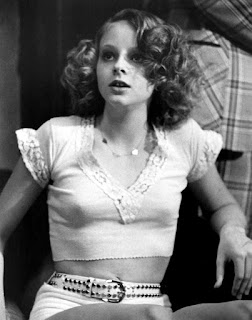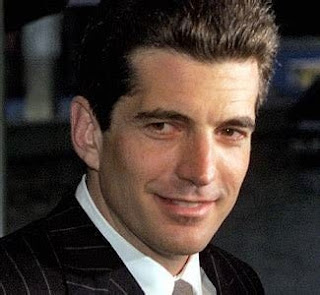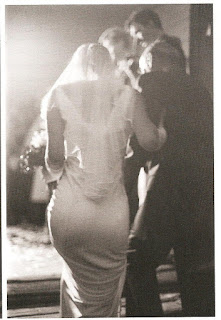Patrick Petty (stylist of Mark Wahlberg and the Funky Bunch) opened his first store, House of Culture Shock, on Newbury Street in Boston. Through his daughter, Petty met a young Boston University student named Carolyn Bessette when she went shopping at his boutique. Allegedly, Wahlberg hit on Bessette, but she refused his advances, due probably to his bad reputation. Later, it was she who introduced his client, Mark Wahlberg, to Calvin Klein for those career-changing underwear ads. Neil Kraft and Herb Ritts greenlighted Wahlberg for the campaign, following it with Calvin Klein television advertisements. Magazine and television promotions sometimes featured Wahlberg exclusively or accompanied by model Kate Moss (with whom he had an affair in 1992). Annie Leibovitz also shot a famous session of Mark Wahlberg in CK underwear for Vanity Fair's annual Hall of Fame issue. Although Carolyn Bessette was credited for enhancing the careers of Kate Moss, Mark Wahlberg, and Michael Bergin, it was Patrick Demarchelier who supervised the final word with Calvin Klein.
Carolyn was a textbook “Queen Bee.” She was popular and beautiful and dated only the “BMOC”, the Big Men on Campus. They were rich or athletes. At Boston University, athletes were held in higher esteem than the wealthy because being wealthy was pretty common there. And among the athletes, hockey players had the highest status of all. It was in this arena that my budding friendship with Carolyn hit a roadblock. Carolyn was dating a hockey player. Some women are Queen Bees. And wherever there are queen bees, there are “wannabees.” This phenomenon sort of applies to the crowd that I hung with at the time I met Carolyn. My closest friends, a completely different group of young women, were reasonably attractive and they wanted to date hockey players. It’s just a Boston University kind of thing. While my friends engaged in flirtations, the hockey players didn’t actually seem to date my wannabee friends. Carolyn had, in her serious relationship with the captain of the hockey team, what my friends wanted. I, of course, was way outside this problem in that I wasn’t even attractive enough to be a wannabee; I was more like a “wannabee in training”. What complicated the situation is that the members of the wannabee circle that I traveled in did not like Carolyn. They did not like her at all. Like all groupies, the wannabees occasionally followed the hockey team to away games. Girlfriends of hockey players of course did this as well. At one such away game, I ran right into Carolyn as I left the restroom. She seemed thrilled to see me, which she conveyed with an affectionate, familiar squeeze of my arm. What was I doing there, she happily wanted to know. She clearly was completely unaware of my wannabee in training status. I explained vaguely that some “friends” thought it might be a fun road trip. I talked amiably with Carolyn but became increasingly uncomfortable as I noticed my “real friends” were watching me from a distance with great interest. We parted with a warm clasping of hands and assurances that we’d see each other next week in class. She went into the ladies room and I went back to my pals, feeling inexplicably sheepish. I was met with laughter and some good natured teasing comments about my apparent “new best friend, Carolyn.” We were all amused by the situation. I briefly wondered if Carolyn’s friendliness toward me would raise me up in the wannabee hierarchy or with my already admittedly lowly status within this group, cast me out entirely. As it turned out, at the time, it did neither. I continued with this uneasy semi-friendship with Carolyn. We greeted each other warmly when we saw each other in class or a pub. At the time it seemed too complicated and slightly disloyal to my so-called friends. From afar Carolyn was cooly captivating; up close she was warm and made me feel well-liked and important. She was physically responsive when talking to people; reaching out and touching and looking a person straight in the eye. She could be kind of haughty but I also experienced her being incredibly warm. She was both distant and yet approachable. I witnessed her having loud public disagreements with her college boyfriend. She often had to put up with women pursuing him, so I kind of get that. Undoubtedly, she had some special qualities, she was really all these things long before she ever married America’s Prince and I suspect she was all these things after she married him as well. But the various books and articles produced don’t always tell that interpretation. She has, unfortunately, been defined almost solely on the basis of her choice of husband. And it doesn’t seem fair to reduce her to that element. Some years back, I found that daily planner from my college days. There on the pages in back, I found the page where Carolyn had written her name and phone number. I couldn’t help but wonder about the “choice” in friends that I had made almost 30 years earlier. That all too familiar reflection of the road not taken in friendships over a lifetime. Carolyn, it turns out, had in addition to some loyal and true friends, an inordinate number of people who, for reasons unfathomable to me, now share or perhaps even fabricate stories about her. It always makes me wonder what kind of friends do this? What kind of friend unnecessarily shares an unflattering detail or, worse, a purely made up story about a deceased friend who can no longer defend herself? I sure as hell wouldn’t. And what of the friends that I “chose” over of her? Holding that page with Carolyn’s round scrawl, I began to actually think about them. Not a single one of those girls from that time is my friend today. I thought about the fact that I was not invited to even one of their weddings. Not one. None of those people came to my father’s funeral nor sent a card. None of them were there to comfort me through the long illness and eventual death of my sister and brother. Having read numerous accounts, even amongst the salacious ones, of Carolyn’s great capacity for caring and loyalty to her friends in times of need, I couldn’t help but wonder if maybe she would have been there for me. As I tossed my old daily planner in the trash, I tore out the page on which she had written her name and number. I put it in a cardboard box along with other loose paper memories and closed the top. As it stands, today, I don’t really miss the group of friends who were part of my earlier life, my college days, at all. I obviously could never breach that inner circle and no one really needs “friends” like them. But had I accepted Carolyn’s invitation to be her friend, and had a relationship developed, I think I would miss a friend like her quite a lot. Source: maryakosstenney.wordpress.com
Jefferson Arrington (a driver for RMA Chauffeured Transportation in Rockville, Maryland): I had been driving a limousine for eight years, and I was assigned as a chauffeur for John Kennedy Jr and his wife Carolyn in 1988. The son of JFK said to me the first day: "Hi, I'm John Kennedy. Nice to meet you." I had been sent to pick him up at Signature Aviation in Washington, where private aircraft fly in to the Reagan National Airport. My passenger, JFK Jr., was in town for an event at the White House. The occasion was the premiere of the HBO miniseries "From the Earth to the Moon" (1998). Because of his father's initiation of the American space program, Jr. had been invited to the dinner reception and he'd also been asked to make the opening remarks. On the way to his hotel, John Kennedy decided to visit the graves of his parents at Arlington Cemetery. Either people did not recognize him or they just left him alone, because I didn't see anyone approach him. John stayed at the graves for a while, and when he returned to the car, I took him to his hotel. In mid-afternoon, we drove out to the National Institute of Health in Bethesda, Maryland, where we were to pick up Carolyn Bessette. John introduced me to her: "Jefferson, this is my wife, Carolyn," he said. My impression at the time was how very nice, how normal, these people were. She was lovely and dressed in a classic way. I remember thinking she was not a raving beauty in the traditional sense, but a very pretty woman, and she was exceptionally nice. As we drove back to the hotel, the two of them talked and held hands. John took the opportunity of this 20-minute drive to read his speech to Carolyn. As a result, I got to hear it before anyone at the White House dinner. As you might imagine, the speech was very well written, with some quotes from President Kennedy woven in. When John finished reading, Carolyn leaned forward and kissed him, telling him how much she liked it. There was a slight pause, and John finally spoke. "Now when I quote my father, I hear his voice." Again, Carolyn gave him a warm hug and kiss. I felt as if I had been in on a very personal, wonderful moment. Later that evening, we pulled into the White House grounds at the east entrance, by a small fountain. Despite a large exodus from the White House at around 11:15 PM, the Kennedys did not emerge until well after midnight. On our short trip back to the hotel, the couple spoke of what a great evening it had been. John commented he had not recognized any of the White House. Just what he meant became clear a year later. President Clinton had given John and Carolyn a tour of the private quarters he shared with Hillary Rodham Clinton. Supposedly, John did not like the new approach of the Clintons at the White House. I remember the wonderful brightness of John and Carolyn. It was for me a brush with greatness, a chance to be a witness to a small bit of history. The morning after the White House event, I arrived at the hotel at about 5:20 AM to pick John up for an early flight. When we arrived at National Airport, John hopped out of the car and grabbed his small bag. He made a point to stop, shake my hand and thank me. He also took an envelope out of his pocket and said: "My wife and I would like you to have this." I thanked him and he was off. I really hoped the envelope would hold a simple signed note. But instead, it held a very generous, very thoughtful tip. He had taken the time to give me an envelope, which seemed so in character for this fellow. After all, he had been John Kennedy all his life, and he was very good at it. —The Day John Died (2007) by Christopher Andersen
Matt Berman (Instagram, October 2020): The Donald Trump cover was the worst cover for George magazine, hands down. This photoshoot of Donald and Melania Trump took place shortly after John Kennedy Jr's fatal plane crash. I was in the midst of negotiating an exit package with Hachette, where I'd worked for eight years, I missed John and I was extremely depressed and distracted. I was feeling sick and I needed a rest. I couldn't find a taxi, and took the R train headed downtown. By 23rd Street, I had chills and felt lightheaded. On the 8th street train platform, a stranger looking down at me, said: Don't move, you're bleeding badly." I'd had a fall and I had collapsed headfirst into the corner of a metal column after exiting my train. "Extreme dehydration," the doctor explained, as he stitched my forehead. I learned that Hachette had decided to continue producing the magazine with a new editor who forbade our archived photoshoots for covers. This new editor said he was excited to feature Donald Trump. I was sent with my assistant Michele for a photoshoot and I couldn't decline. The Trump Tower was like the tackiest hotel in the world, with gold and marble and crystal overloads, with fake Monet and Renoir paintings. It was quite the contrast to John and Carolyn's downtown loft with its cozy sofas and beers in the fridge. During the shoot, Michele and I stood out of the shooting frame, behind Donald and Melania. It was gross. With John gone, it was all pay to play. Had John been in charge, that photoshoot would never have been produced. John couldn't stand Trump's presence, especially since he had hit on his wife Carolyn at Mar-a-Lago in 1997... Please, vote for Biden!

















































